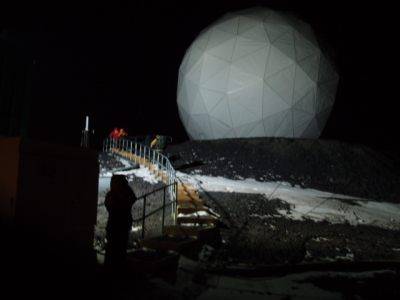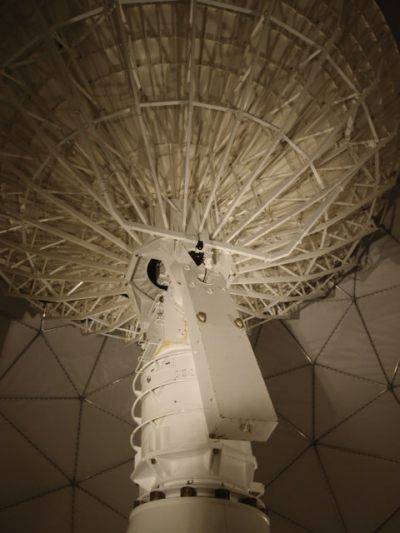Author: Sue
Date: 26 June 2013
Temperature: -22 degrees
Wind speed: 5 knots
Temp with wind chill: -29 degrees
Sunrise: N/A
Sunset: N/A
There are many outstanding things about living for a while in Antarctica. One of them is certainly meeting some of the other people who do the same, and learning about their roles here. We, with the Antarctic Heritage Trust, are fortunate to be involved in some of the more unusual winter work—and work that changes constantly—so there's always a lot of interest and fascination from others in what we do. We regularly have visits and/or enquiries from those at Scott Base and neighbouring US McMurdo Station who are curious to know 'what artefacts are in the lab today?' And they're never disappointed.
The AHT team heads to the dome above McMurdo Station © AHT/Sue
A recent highlight for the AHT team was to be taken on a tour of the NASA facility at McMurdo by the two NASA engineers who are wintering-over there, and who have become our friends through our regular social inter-base darts evenings.
The dish antenna inside the dome © AHT/Sue
The tour involved an overview of NASA's ongoing data collection programme from the many international polar-orbiting satellites that pass overhead … on average once an hour, and collecting such data as ocean salinity and temperature measurements. This was followed by a visit to the hilltop dome housing NASA's dish antenna. There, in minus 30-something degrees, we watched in awe as the 10m dish leapt with surprising agility to its task and tracked a satellite from horizon to horizon. Fascinating stuff, and beaut to see!




